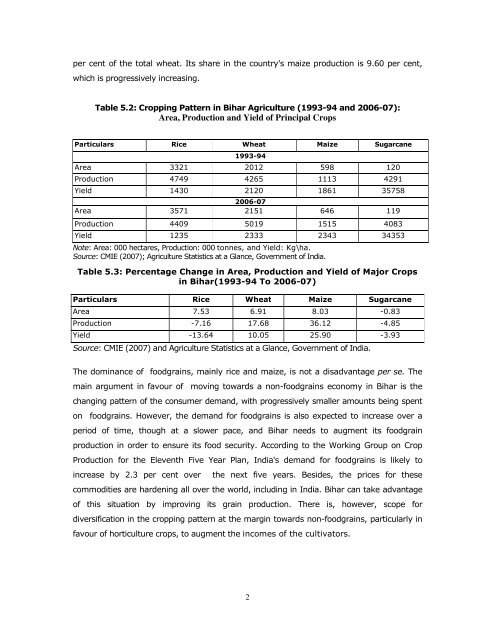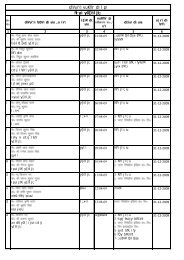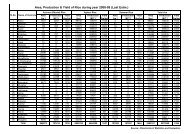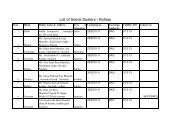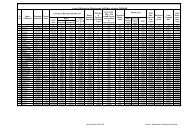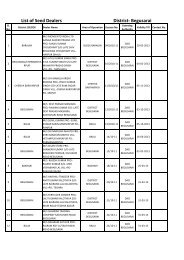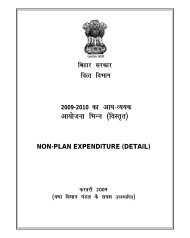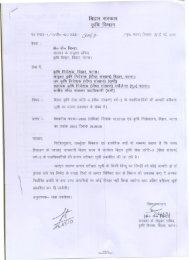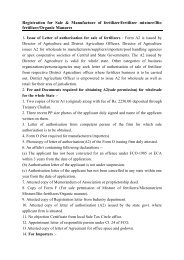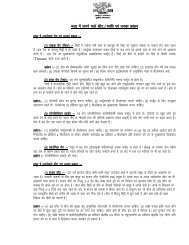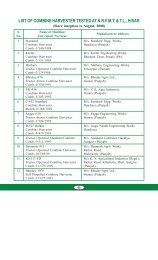chapter v cropping pattern, crop diversification and value addition
chapter v cropping pattern, crop diversification and value addition
chapter v cropping pattern, crop diversification and value addition
Create successful ePaper yourself
Turn your PDF publications into a flip-book with our unique Google optimized e-Paper software.
per cent of the total wheat. Its share in the country's maize production is 9.60 per cent,which is progressively increasing.Table 5.2: Cropping Pattern in Bihar Agriculture (1993-94 <strong>and</strong> 2006-07):Area, Production <strong>and</strong> Yield of Principal CropsParticulars Rice Wheat Maize Sugarcane1993-94Area 3321 2012 598 120Production 4749 4265 1113 4291Yield 1430 2120 1861 357582006-07Area 3571 2151 646 119Production 4409 5019 1515 4083Yield 1235 2333 2343 34353Note: Area: 000 hectares, Production: 000 tonnes, <strong>and</strong> Yield: Kg\ha.Source: CMIE (2007); Agriculture Statistics at a Glance, Government of India.Table 5.3: Percentage Change in Area, Production <strong>and</strong> Yield of Major Cropsin Bihar(1993-94 To 2006-07)Particulars Rice Wheat Maize SugarcaneArea 7.53 6.91 8.03 -0.83Production -7.16 17.68 36.12 -4.85Yield -13.64 10.05 25.90 -3.93Source: CMIE (2007) <strong>and</strong> Agriculture Statistics at a Glance, Government of India.The dominance of foodgrains, mainly rice <strong>and</strong> maize, is not a disadvantage per se. Themain argument in favour of moving towards a non-foodgrains economy in Bihar is thechanging <strong>pattern</strong> of the consumer dem<strong>and</strong>, with progressively smaller amounts being spenton foodgrains. However, the dem<strong>and</strong> for foodgrains is also expected to increase over aperiod of time, though at a slower pace, <strong>and</strong> Bihar needs to augment its foodgrainproduction in order to ensure its food security. According to the Working Group on CropProduction for the Eleventh Five Year Plan, India's dem<strong>and</strong> for foodgrains is likely toincrease by 2.3 per cent over the next five years. Besides, the prices for thesecommodities are hardening all over the world, including in India. Bihar can take advantageof this situation by improving its grain production. There is, however, scope for<strong>diversification</strong> in the <strong><strong>crop</strong>ping</strong> <strong>pattern</strong> at the margin towards non-foodgrains, particularly infavour of horticulture <strong>crop</strong>s, to augment the incomes of the cultivators.2


